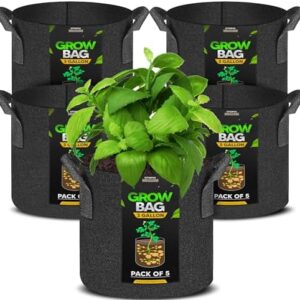Do you have a love for all things succulent and prickly? If so, then cacti are probably a big part of your plant collection. These resilient desert plants come in all shapes and sizes, making them a unique and fun addition to any home or garden. But, like any other living thing, cacti need a little love and care to thrive and grow to their fullest potential.
In this step-by-step guide, we’ll walk you through the basics of caring for your cacti so you can keep them happy and healthy for years to come. From proper watering techniques to the right soil mix, we’ve got you covered.
Step 1: Choosing the Right Pot and Soil
The first step in caring for your cacti is choosing the right pot and soil. Cacti thrive in well-draining soil that is slightly acidic. It’s important to choose a pot with drainage holes in the bottom to prevent water from pooling around the roots, which can lead to root rot.
When repotting your cactus, be sure to use a specialized cactus soil mix or create your own by combining potting soil with sand or perlite. This will ensure proper drainage and aeration for your desert plant.
Step 2: Watering Your Cacti
One of the most common mistakes people make when caring for cacti is overwatering. This can lead to root rot and ultimately kill your plant. Cacti are built to store water in their fleshy stems and leaves, so they don’t need to be watered as frequently as other plants.
During the growing season (usually spring and summer), water your cactus once every two to three weeks, allowing the soil to dry out completely between waterings. In the winter, reduce watering to once a month or less, as cacti go dormant during this time.
When watering your cactus, be sure to water the soil directly and avoid getting water on the body of the plant, as this can lead to mold and rot. Additionally, use room temperature water to prevent shock to the roots.
Step 3: Providing Adequate Light
Cacti are desert plants, so they thrive in bright, indirect light. Place your cactus near a sunny window where it can receive at least six hours of sunlight per day. If you notice your cactus leaning towards the light source or becoming etiolated (stretching out), it may not be getting enough sunlight.
During the winter months, when the sun is not as strong, you may need to supplement with a grow light to ensure your cactus is getting enough light to thrive.
Step 4: Temperature and Humidity
Cacti are known for their ability to thrive in hot, dry climates, so they prefer warm temperatures and low humidity. Keep your cactus in a room where the temperature stays between 60-80°F (15-27°C) during the day and no lower than 50°F (10°C) at night.
During the winter months, be sure to protect your cactus from drafts and cold temperatures, as they are sensitive to extreme cold.
Step 5: Fertilizing Your Cacti
While cacti are low-maintenance plants, they do benefit from occasional fertilizing to promote growth and flowering. During the growing season, fertilize your cactus with a diluted cactus fertilizer every 4-6 weeks.
Avoid fertilizing during the winter months when your cactus is dormant, as it does not need the extra nutrients during this time.
Step 6: Pruning and Propagating
Pruning your cactus is not necessary, but it can help to shape and encourage new growth. Use sterilized pruning shears to remove any dead or damaged stems, as well as any offsets (baby cacti) that may be growing around the base of the plant.
To propagate your cactus, simply cut off a healthy stem and allow it to callous over for a few days before planting it in a pot with well-draining soil. Keep the soil moist but not waterlogged until roots begin to form, then treat it like a mature cactus.
In conclusion, caring for your cacti is a rewarding and fulfilling experience that can bring years of enjoyment. By following these simple steps and giving your desert plant the love and attention it deserves, you can enjoy a beautiful and thriving cactus collection for years to come. Remember, each cactus is unique and may have specific care requirements, so be sure to research the specific needs of your plant to ensure its health and happiness. Happy gardening!






